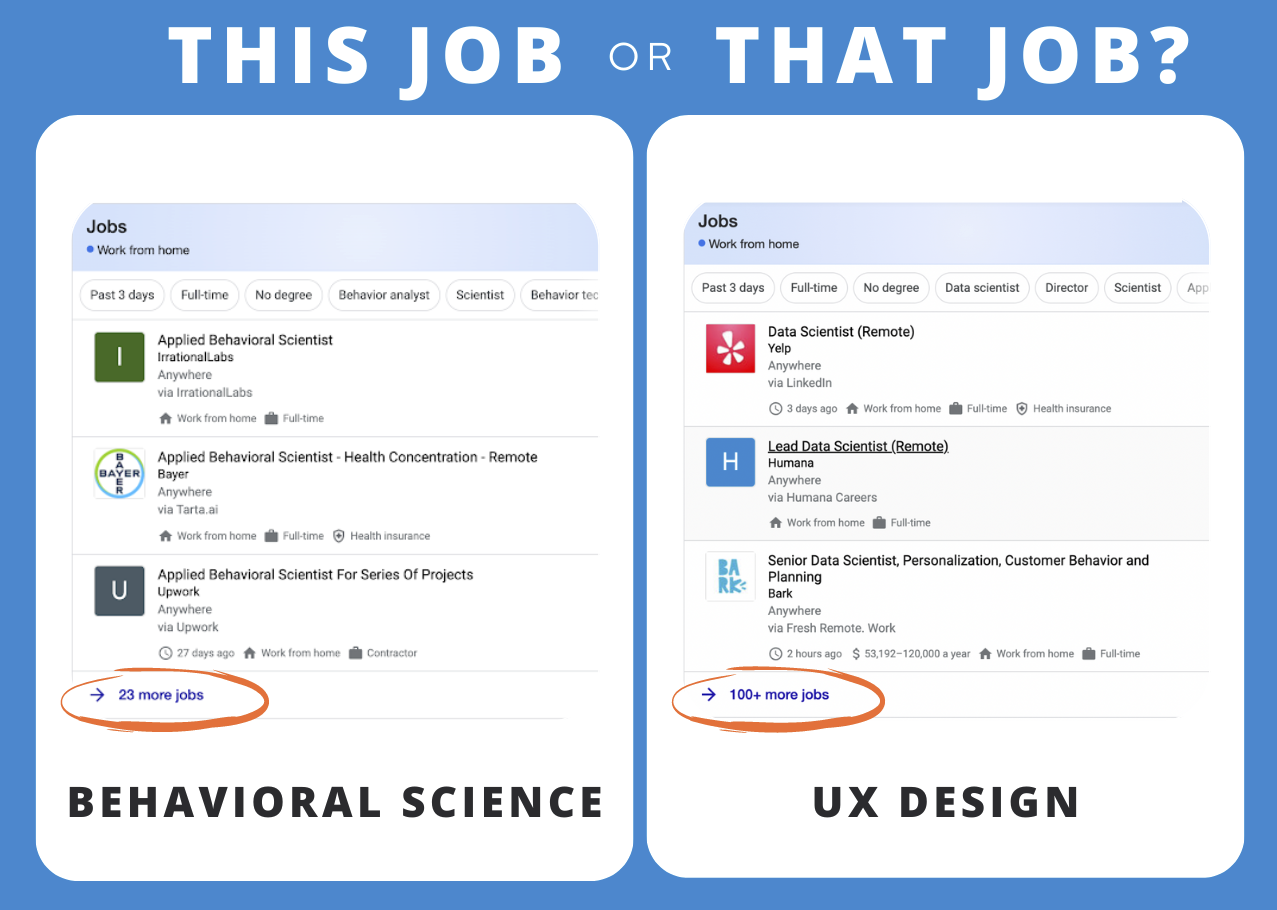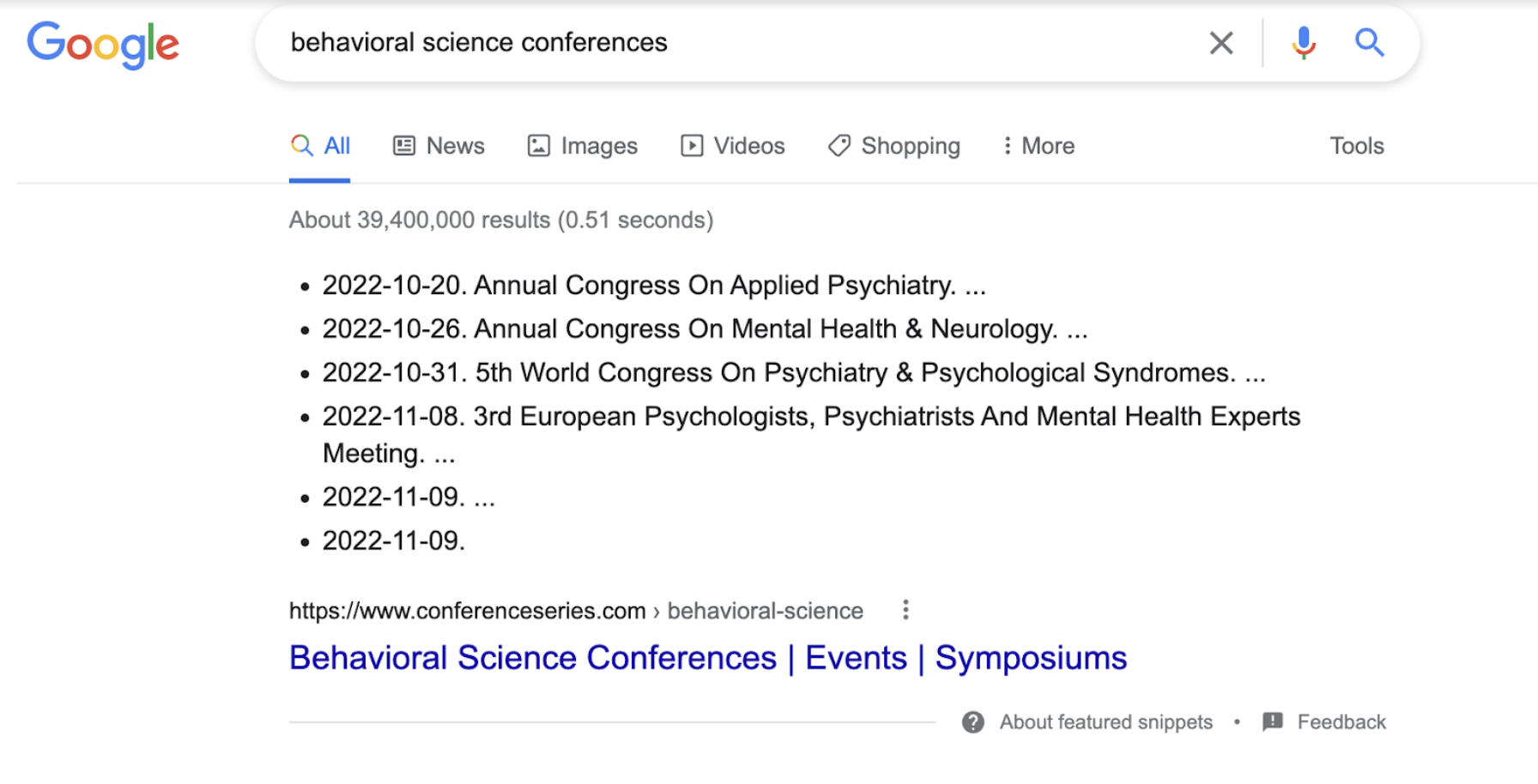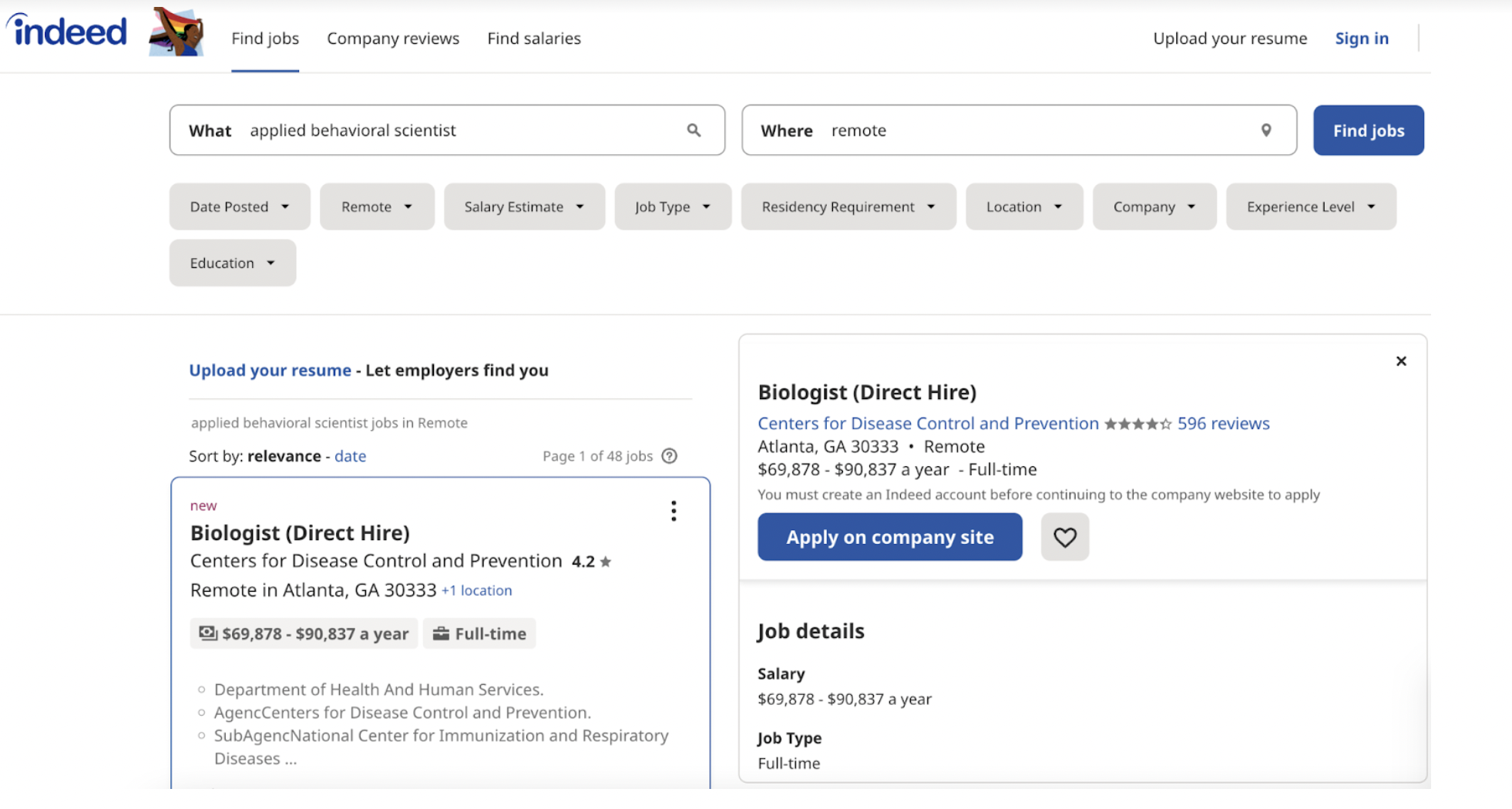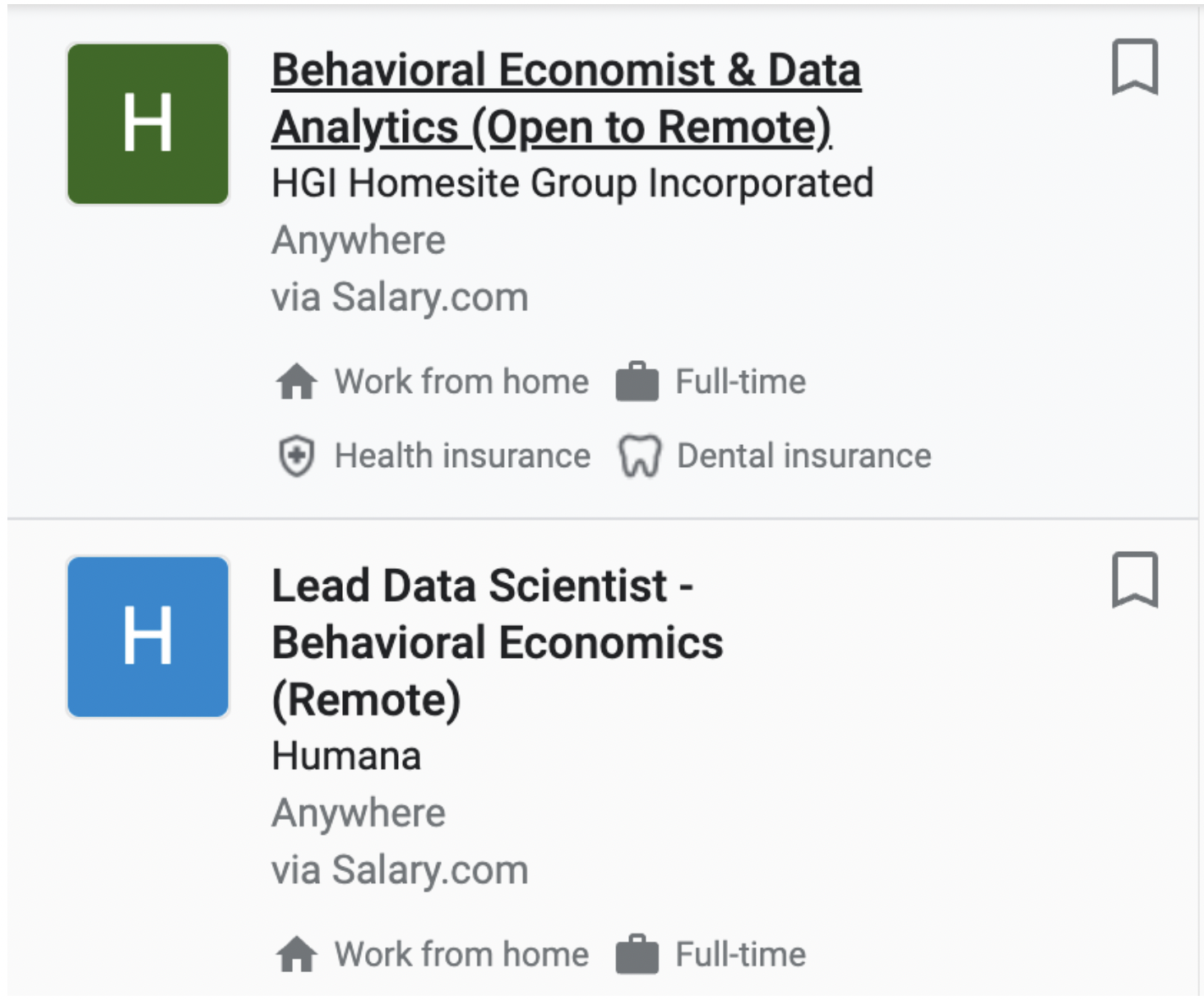Careers in behavioral science can be hard to visualize. After all, how do you envision a future in a field that’s so small, you have to squint to see it?
Seriously: the behavioral science world is tiny.
During a recent dinner at my cofounder’s behaviorally-designed commune, it dawned on me just how tiny – for what felt like the thousandth time. I was sitting with my coworkers from Irrational Labs, next to someone I worked with years ago at a different behavioral science firm, and across from a former desk-mate – whose partner was my first manager at that other firm. And on my right? Two colleagues who had worked together at a behavioral science firm in Canada.
What was going on? Why did I know everyone?
We’re All In This Together
If it seems like we all know each other, it’s because most of us do. We’ve all worked together, or under the same management, at some point. And many of us date or marry other behavioral or social scientists, which makes for even more interesting stories to come – ones like, ‘How Behavioral Scientists Get Their Partners to Put the Toilet Seat Down.’
But why do we all know each other’s business? Shouldn’t LinkedIn requests occasionally come from people who don’t look vaguely familiar? I wanted answers – and the behavioral scientist in me needed them. So, I set out to learn why I recognize so many BeSci nerds – no matter the continent or time zone.
Exactly How Small Is the World of Behavioral Science?
First I wanted to check my intuition – because we all know it can be flawed. So I did some digging to confirm my suspicion that this field is, indeed, relatively small. And if you have time for a quick Google search? You’ll see that the number of jobs available in behavioral science (‘23 more jobs’) is much smaller than that of adjacent fields – like UX design (‘100+ more jobs’) and data science (‘100+ more jobs’).

And the numbers don’t lie: one report estimated that about 6,000 people are employed in applied behavioral science teams across nonprofits and companies worldwide. But because the field is small, it’s also relatively understudied. So, although this is one of the first and most comprehensive reports to date, there remains a gap in robust data sets – on both the number of behavioral science careers and the field’s overall trajectory. This is understandable, considering that BeSci is an emerging field with a wide diversity of roles – and even more diversity in the names for those roles.
Why Does Size Matter, Anyway?
Working as a behavioral scientist is an incredible job. So, when it comes to expanding our field? The more, the merrier! But beyond that? The work happening in behavioral science matters (not that I’m biased 😉).
For example, when we discuss our jobs – and what we’ve learned in each different workplace – my colleagues and I could talk for hours. A sampling includes:
- how behavioral audits have enabled various social services to improve their processes – and better help underserved populations
- how social norms campaigns can decrease conflict and violence
- why weight loss strategies are most effective when they incorporate behavioral insights
And on and on it goes. Just as importantly? It seems that everyone exposed to our work – whether through TED talks, conversation, endless ranting, or professional partnerships and projects – concludes that behavioral science matters. And that it’s a no-brainer: the field should exist, it should expand, and – quite possibly – it should include them.
Indeed, I often find myself explaining my current projects to colleagues, former classmates, or even the barista at my coffee shop – who also got a psychology degree from a liberal arts college. And their most common questions are, ‘How did you end up doing that?’ and ‘How can I do what you do?’
The frequency of these questions? It got me thinking.
Careers in Behavioral Science: 3 Common Barriers
Being an ever-curious behavioral scientist, I wanted to better understand the barriers causing my amazing field – and its many wonderful opportunities – to fly under the radar. And as it turns out, these barriers are both structural (think: number of jobs compared to other professions) and behavioral (think: perception of one’s ability to get those jobs). So below, I’ll use a behavioral lens to outline why you may not have ended up in this awesome field – despite being qualified or interested. I’ll also point you in the right direction to join me – and my behavioral science community – in our exciting and dynamic profession. Let’s dive in.
Barrier 1: Logistical Friction
The Field Is Still (Very) Young
Daniel Kahneman and Amos Tversky are widely considered to be the ‘founders’ of behavioral science. And they began researching and writing about heuristics and bias in human decision-making in the 1970s. But it wasn’t until 2008 – and the publishing of Nudge – that behavioral science really entered the spotlight.
As for the term ‘nudge’? It may mean something to the average UX designer now – but that only recently became the case. Because our field – like other scientific and economic disciplines – had gotten stuck in academia. However, behavioral science superstars – like Dan Ariely, Katy Milkman, and Laurie Santos – emerged to lead us into the mainstream zeitgeist. These folks have published in journals and blogs – and lectured on TED talks and podcasts – about popular topics like using behavioral economics to increase happiness and build good habits.
The (Too) Many Definitions of Behavioral Science
Despite the field’s growing popularity, it seems most people still don’t really understand what behavioral science means. And how can you pursue a career in something you can’t define?
We are called different things by different people, domains, and fields of study. For example, Merriam Webster defines ‘behavioral science’ as ‘a branch of science (such as psychology, sociology, or anthropology) that deals primarily with human action and often seeks to generalize about human behavior in society.’ And based on that definition? I have literally no idea what a behavioral scientist does.
When we move to Wikipedia, we learn that ‘behavioral sciences explore the cognitive processes within organisms and the behavioral interactions between organisms in the natural world.’ So, again: what does that actually mean in practice? And to further complicate matters, even our team at Irrational Labs may offer slightly different explanations of what we do.
Getting Down To Logistical Friction
Hassles or challenges that make actions more difficult are called logistical friction – and this is exactly what I encountered when trying to find behavioral science resources.
For example, searching for behavioral science conferences – as you can see below – yields very random results. They range from applied psychiatry conferences to annual meetings for neurologists and mental health experts. This friction makes it hard for newly curious BeSci fans to find resources or mentors that can guide them into learning more.
Moreover, because existing behavioral science teams are so small, they often can’t invest in training or promoting the field. And this continues to perpetuate the problem.

Barrier 2: What Shared Mental Model?
We all know what medical doctors do, even though many different specialties exist. That’s because we know doctors, see them represented in the media, and understand the general pathway to becoming a doctor (pre-med, med school, residency, internships, and ‘doctor-dom’). Moreover, we know that doctors examine people, care for them, and prescribe solutions for pain and health issues.
Having a ‘mental model’ or shared understanding of a profession – including what the work entails and how to enter the field – is important. After all, it helps children decide if they want to enter said profession. It also tells us what to expect should we choose a given career path – and helps us determine whether a job is the right fit for us. On the flip side, it can be hard to get into a field without a shared understanding of what the work actually looks like.
So Many Job Titles
Positions in the field of behavioral science have many different names. So, in addition to confusion about what the job entails, the titles for the job vary. Job titles include behavioral economist and applied behavioral scientist – but these roles also share lots of skills and duties with research managers, data scientists, product managers, UX and UI designers, and market analysts.
Even searching for a behavioral science-based job results in many positions unrelated to our field. For example, searching for a job using the most obvious keyword – applied behavioral scientist – returns listings like ‘biologist’ and ‘therapist.’

Inconsistent Job Requirements
When reviewing available jobs, I noticed that companies require applicants to have varying types and levels of experience. For example, some job listings require a post-graduate degree – which presents significant socio-economic barriers. Others don’t require a degree, but do require experience and training as a behavioral scientist. But what exactly does that mean – and how does one obtain it?

Many Hats to Wear
As behavioral scientists, our job includes aspects of other jobs. This is because careers in behavioral science include responsibilities like data science and product design that could be (and are!) jobs of their own.
For example, quantitative user researchers gather insights, but don’t do behavioral design. And data scientists set up and analyze results from company testing. But behavioral scientists? We identify the behavioral problem or opportunity, and then we use the lens of human psychology to diagnose barriers contributing to that problem. After our behavioral diagnosis, we design solutions to address the barriers head-on – and run tests to determine whether these designs work. We use behavior as an outcome with science as a process.
Hello, Availability Bias
Other jobs that involve some version of our work – like UX or human-centered design – are more common and thus more top-of-mind. A version of availability bias and a simple numbers game could be at play here. For example, most of us know a UX designer or a psychologist – and we also know that these jobs involve designing for human behavior. So, we may (erroneously) believe that if we want to make a career of understanding and designing for people’s behavior, our only path forward is through UX design or psychological research.
Barrier 3: Choice Overload and Paralysis
There are many paths to careers in behavioral science, which makes it a difficult field for people to enter. In fact, my coworkers and I all ended up here in different ways. I was a social psychologist, and had an existential discussion in college about wanting to use my knowledge and training to help people in the real world. The person I spoke with knew someone hiring for behavioral scientists from my scholarship pool – and here I am. My coworker Karl happened upon Nudge and became obsessed. He applied to a master’s program in behavioral economics – and now, here he is.
At my last job, I worked with law school graduates, art majors, business majors, economics PhDs, former teachers, and social workers. So when you ask a behavioral scientist how they got to where they are, the pathways are often nontraditional. For instance, data shows that only 52% of behavioral scientists report having a formal degree in the field. Of those who do not:
- 83% learned through books
- 77% learned on the job
- 42% learned through formal coursework
- 52% learned through informal online classes
Some data scientists or UX designers even take an intensive behavioral science course like our bootcamp – and then carve out their own BeSci jobs within their workplaces.
Where’s the Starting Line?
With so many different ways to get experience and training, it can be hard to know where to start. And preparing for a job search in applied behavioral science can be even harder. After all, there are many careers in behavioral science that require a ton of experience – and even more ways to gain the skills and knowledge required. This astronomical number of choices could confuse even the most organized and committed BeSci enthusiast.
Niches Within Niches
A ‘behavioral science career’ includes many different types of jobs – which means even more choices to make! It’s true: you can ‘niche down’ the behavioral science niche even further, thanks to various areas of expertise. Behavioral scientists specialize in everything from implicit racial bias to habit formation and health/wellness.
Indeed, behavioral scientists use a similar lens to do many different things. But if you don’t know much about the field, lack the experience required to explore it professionally, and can’t even find job opportunities on Google? You may very well take one look at that career chart, throw your hands up in exasperation, and move on.
Behavioral Science Careers: Final Thoughts
At this point, you’re likely wondering why I care so much. The answer? Because I want you to join my community!
I know I’m biased – but with more people practicing behavioral science, the field will improve by leaps and bounds. We’ll be able to design the world around us with our best interests in mind – and say goodbye to mindless systems and processes designed to manipulate us.
Why do careers in behavioral science matter so much? I’ll explain.
The Field Needs To Diversify
Instead of recruiting outsiders who could make a great fit, we often default into recruiting people from networks of existing behavioral scientists. Thanks to this tendency, our field is mostly white and middle-aged. Why does this matter? Because we must address the structural inequality keeping brilliant people from our field due to race, class, or background. Additionally, diverse perspectives are integral to gaining deeper insights, making breakthroughs, and viewing (and solving!) problems using different lenses.
We Need Behavioral Science – Now More than Ever
Applied behavioral science can inform public policy decisions that affect millions of lives. It can also help people pay their taxes, find better jobs, become organ donors, access healthier food, and make better decisions with their health. We can even change norms around harmful human rights violations across the globe.
It’s a Great Gig
My final pitch? Working as a behavioral scientist is a wonderfully fun job. It pays well – and because you learn so many different skills, there’s never a dull moment. It’s collaborative and creative work. And besides: who doesn’t want to understand why humans do what they do?
The moral of the story? Don’t feel bad that you haven’t yet happened upon a career in behavioral science, and ended up overanalyzing the world – and yourself. But now is your chance to change that.
————————————————————————————————–
Now that you know how great careers in behavioral science are, are you ready to become a behavioral scientist. Here’s how to do it.
Need help applying behavioral science to improve your product? Get in touch to learn more about our consulting services. Or learn more behavioral science by joining one of our bootcamps.
